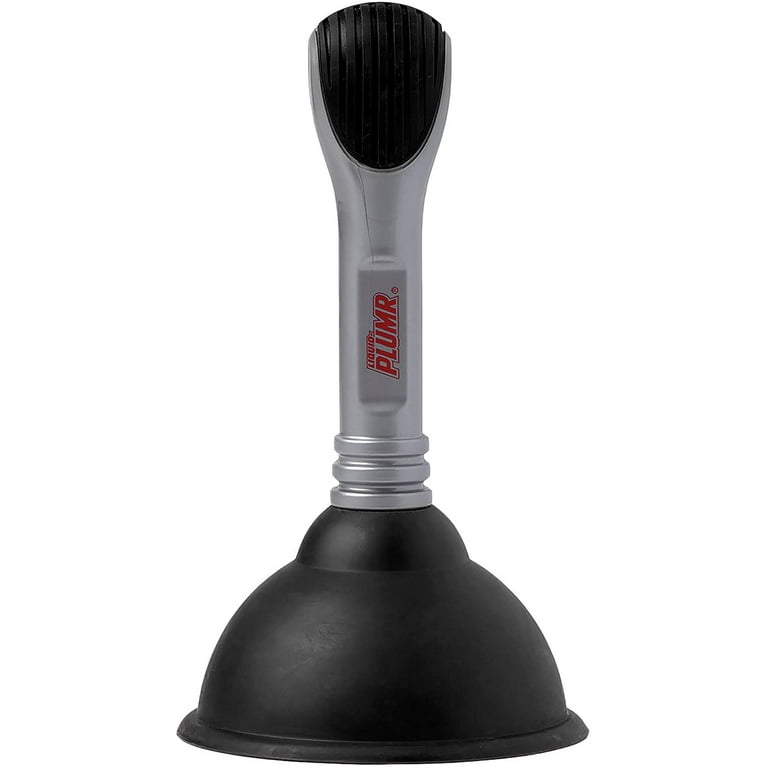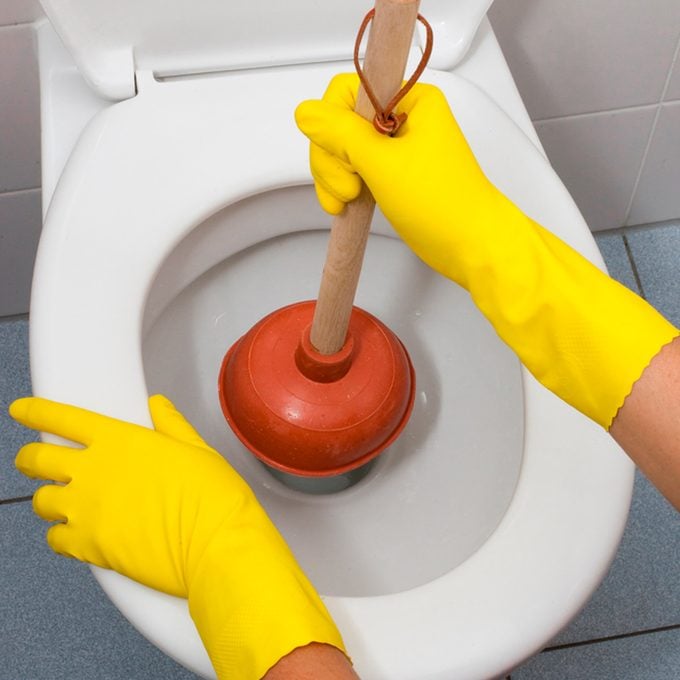Mastering Plunger and Drain Cleaners: Key Advice
Mastering Plunger and Drain Cleaners: Key Advice
Blog Article
Each person is bound to have their unique opinion involving Tips on How to Effectively Use a Plunger.

Intro
Correct upkeep of household drains is necessary for protecting against clogs and ensuring smooth water flow. One of the key tools in every property owner's toolkit is the plunger, alongside various drain cleaners made to take on persistent blockages successfully. This post explores just how to make use of bettors and drainpipe cleaners properly to keep your drains moving easily.
Section 1: Recognizing Plungers
Sorts of Plungers
There are a number of sorts of plungers available, each designed for various types of drains and obstructs. The most typical types include mug plungers, flange bettors, and accordion plungers.
Just How Plungers Work
Bettors work on the concept of producing pressure and suction to dislodge obstructions. When correctly used over a drain, they develop a vacuum that can take out debris or break up obstructions.
Choosing the Right Plunger
Choosing the ideal plunger depends on the sort of drainpipe and the nature of the clog. Cup bettors are ideal for sinks and tubs, while flange plungers are better fit for commodes as a result of their layout.
Typical Errors with Bettors
Preventing these errors guarantees efficient plunging: improper seal around the drain, inadequate pressure, and unclear surrounding particles.
Area 2: Making Use Of Plungers Properly
Preparation
Prior to diving, make certain the bettor covers the drainpipe entirely and develops a tight seal. Clear any type of noticeable particles around the drainpipe opening.
Strategy
Beginning with mild diving movements to develop suction. Rise pressure slowly, utilizing a constant rhythm. Repeat as required until the drain removes.
Fixing Tips
If diving doesn't function, try readjusting the seal, applying oil jelly for a much better seal, or utilizing a different kind of bettor.
Area 3: Recognizing Drain Cleaners
Types of Drainpipe Cleaners
Drain cleansers can be chemical or chemical. Chemical cleansers use strong chemicals to dissolve blockages, while chemical cleansers make use of all-natural enzymes to break down raw material.
Exactly How Drain Cleansers Work
Chemical cleaners react with clogs to dissolve them, while chemical cleaners break down natural products like hair and grease without harming pipes.
Safety Considerations
Always put on handwear covers and eye security when using chemical drainpipe cleansers. Ensure ample air flow and follow supplier directions very carefully.
Eco-Friendly Alternatives
Consider using vinegar and cooking soda or enzyme-based cleansers for environment-friendly options that are more secure for pipes and the atmosphere.
Area 4: Using Drain Cleaners Properly
Application Techniques
Pour chemical cleansers directly into the drain opening. Allow them to work for the advised time prior to flushing with hot water. Chemical cleansers ought to sit over night.
Precautions
Prevent blending various sorts of cleansers, as this can generate harmful fumes. Never utilize chemical cleaners together with a bettor, as spilling can happen.
Managing Stubborn Blockages
For consistent blockages, think about using a pipes snake or calling a professional plumber to stop damage to pipelines.
Conclusion
To conclude, understanding exactly how to make use of plungers and drainpipe cleaners successfully is important for keeping healthy plumbing systems. By picking the right devices and techniques, house owners can take on small clogs and stop significant pipes concerns down the line.
How To Properly Use A Plumbing Snake To Clear Drains
When any drain clogs in our home arise, we tend to gravitate toward the plunger and little else. In cases where the plunger and its vacuum-created pressure are not able to clear clogs, many immediately move to harmful chemicals or simply call their plumber to fix the issue.
we’re happy to help with all drain cleaning needs and concerns. This includes informing you on a few other home remedies you may have at your disposal for minor to moderate clogs, one of which is the use of a plumbing snake. Many people have never used one of these before – let’s go over the steps to take when your drain clogs and you have a plumbing snake available.
Attempt Plunger Use
The first step here, as we noted above, should indeed be to grab your plunger when you notice a drain clog and attempt to resolve it this way. If you’re unsure how to use a particular type of plunger, our plumbers can answer any questions you have. If this doesn’t do the trick, however, you move on to the snake.
Locate And Prepare Snake
A plumbing snake is a metal or plastic device that’s generally about a quarter of an inch thick. It’s design with significant extensions, meant to reach down into your clogged drain and push the clog out. Snakes also contain drain augers that will latch onto and push stubborn blockages.
If your plunger doesn’t clear a clog, locate your snake and bring it to the drain in question. We also recommend keeping a bucket nearby to collect the clog once you pull it out, plus we’d advise wearing goggles and possibly protective gloves.
Feed Snake
Once you’re ready to go, feed the snake slowly down the drain, using the crank device it comes with to keep it moving until it finds the clog. Once this happens, much of the clog will be latched onto the coil so you can pull it out, while the rest will simply break up and flow downward.
Detach Debris
Remove the snake slowly from the drain, and once you’ve done so, pick off any debris that’s stuck to the coil. This is another area where wearing gloves is a must.
Flush Drain
Finally, take a few minutes to ensure the snake has done its job correctly. If you’ve been using it on a toilet, flush the toilet a couple times and make sure everything flows well. If you’ve used it on a different drain, flush it with some room temperature water.
https://www.mybuddytheplumber.com/blog/how-to-properly-use-a-plumbing-snake-to-clear-drains/

Application Techniques
Pour chemical cleansers directly into the drain opening. Allow them to work for the advised time prior to flushing with hot water. Chemical cleansers ought to sit over night.
Precautions
Prevent blending various sorts of cleansers, as this can generate harmful fumes. Never utilize chemical cleaners together with a bettor, as spilling can happen.
Managing Stubborn Blockages
For consistent blockages, think about using a pipes snake or calling a professional plumber to stop damage to pipelines.
Conclusion
To conclude, understanding exactly how to make use of plungers and drainpipe cleaners successfully is important for keeping healthy plumbing systems. By picking the right devices and techniques, house owners can take on small clogs and stop significant pipes concerns down the line.
How To Properly Use A Plumbing Snake To Clear Drains
When any drain clogs in our home arise, we tend to gravitate toward the plunger and little else. In cases where the plunger and its vacuum-created pressure are not able to clear clogs, many immediately move to harmful chemicals or simply call their plumber to fix the issue.
we’re happy to help with all drain cleaning needs and concerns. This includes informing you on a few other home remedies you may have at your disposal for minor to moderate clogs, one of which is the use of a plumbing snake. Many people have never used one of these before – let’s go over the steps to take when your drain clogs and you have a plumbing snake available.
Attempt Plunger Use
The first step here, as we noted above, should indeed be to grab your plunger when you notice a drain clog and attempt to resolve it this way. If you’re unsure how to use a particular type of plunger, our plumbers can answer any questions you have. If this doesn’t do the trick, however, you move on to the snake.
Locate And Prepare Snake
A plumbing snake is a metal or plastic device that’s generally about a quarter of an inch thick. It’s design with significant extensions, meant to reach down into your clogged drain and push the clog out. Snakes also contain drain augers that will latch onto and push stubborn blockages.
If your plunger doesn’t clear a clog, locate your snake and bring it to the drain in question. We also recommend keeping a bucket nearby to collect the clog once you pull it out, plus we’d advise wearing goggles and possibly protective gloves.
Feed Snake
Once you’re ready to go, feed the snake slowly down the drain, using the crank device it comes with to keep it moving until it finds the clog. Once this happens, much of the clog will be latched onto the coil so you can pull it out, while the rest will simply break up and flow downward.
Detach Debris
Remove the snake slowly from the drain, and once you’ve done so, pick off any debris that’s stuck to the coil. This is another area where wearing gloves is a must.
Flush Drain
Finally, take a few minutes to ensure the snake has done its job correctly. If you’ve been using it on a toilet, flush the toilet a couple times and make sure everything flows well. If you’ve used it on a different drain, flush it with some room temperature water.
https://www.mybuddytheplumber.com/blog/how-to-properly-use-a-plumbing-snake-to-clear-drains/

Hopefully you enjoyed our post about How To Use Your Toilet Plunger Correctly in 5 Easy Steps. Thanks for taking a few minutes to read our blog post. Sharing is good. You won't know, you will be doing someone a favor. Thank you for taking the time to read it.
Schedule Now! Report this page